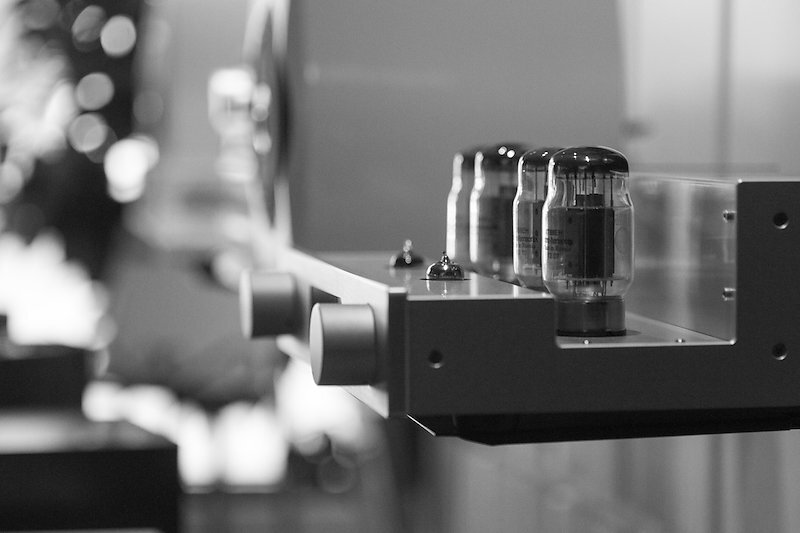The Language of Hi-Fi
Hi-Fi has it's own language. We're not trying to be snobs or difficult, but we're trying to deal with the delightful problem of describing the incredible richness of great sound reproduction. It's an impossible task, since we're dealing with sensations that can't really be put into words. Plus, everyone experiences great stereo in their own way. Nonetheless, we've put together a glossary of Hi-Fi terms to help you appreciate your system a little better.
Balance: Having a blend of bass, midrange, and treble, without undue emphasis on any particular tonal range.
Boom: An over-emphasis of bass frequencies that obscures the rest of the music, often described by the unaware as "good bass."
Clarity: Used to describe the ability to recreate the precise sound that was recorded without being clouded by the Hi-Fi adding or detracting something; analogous to reading with and without your glasses.
Depth: The ability of a Hi-Fi system to create the impression of sounds coming from in front and behind the speakers, not just from the left or right.
Detail: Recreating the small nuances that only a fine system can reproduce allowing the listener to distinguish between types of instruments (i.e. steel string vs. nylon string guitar), the number of vocalists, the hall in which a work is being performed, etc.
Dynamic: Used to describe a Hi-Fi system that can recreate the impact of live music; going effortlessly and quickly from quiet loud... an easy thing for live music, but a difficult one for reproduced music.
Harsh: Used to describe sound that becomes bothersome after extended listening. This can be caused by excessive distortion or emphasis of treble frequencies, or any other noticeable aberration in sound. (A worn out record or needle can make even the finest system sound harsh.)
Imaging: The ability to create a sonic "picture" of what was happening when an event was recorded; allowing you to "see" with your ears, i.e. a voice appearing to actually be coming from someone's mouth and not just "filling the room" with sound.
Openness: A term used to describe sound that does not appear to be confined to a box or enclosure, but appears to be happening out in the listening room.
Tight: Usually used to describe bass frequencies as reproduced by a Hi-Fi system, referring specifically to a controlled, precise, sound produced by a woofer (bass speaker) that follows the signal precisely without flopping or resonating. (Think of the sound of a large drum with the skin stretched tightly.)
Of course, the best way to learn the language of Hi-Fi is not from reading about it, but by experiencing it. And when you do experience it, words like "open," "depth," "detail," and "clarity" will just naturally spring to your tongue.
Such is the case with the Hi-Fi systems you'll find at Glenn Poor's Audio Video.
You're welcome to come in with your favorite albums, settle down, listen, and spend as much time as you like experiencing great Hi-Fi, and maybe even coin a few superlatives of your own. And don't mind if your own superlatives are not on the list above; after all, it's the enjoyment of great Hi-Fi that counts!
